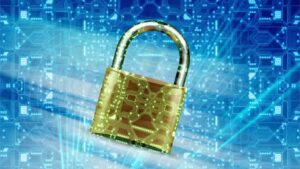Key Takeaways
-
- Simplified Cybersecurity Guidance: The USF Cybersecurity Flowchart simplifies complex online safety processes, making it accessible for students and staff to understand and implement critical cybersecurity protocols.
-
- Incident Identification and Response: Key components of the flowchart include recognizing potential cyber threats and providing step-by-step response protocols to address issues like phishing and data breaches effectively.
-
- Risk Assessment Importance: Conducting thorough risk assessments allows individuals to evaluate potential threats’ severity, enabling informed prioritization of cybersecurity efforts.
-
- Training and Awareness Programs: USF promotes a culture of cybersecurity through regular training sessions and awareness programs, ensuring the university community stays informed about evolving threats.
-
- Continuous Evaluation and Improvement: Regular reviews and updates of the flowchart ensure its effectiveness and relevance, adapting to new cyber threats and improving user engagement and response strategies.
In today’s digital landscape, cybersecurity is more crucial than ever. The University of South Florida (USF) has developed a comprehensive cybersecurity flowchart designed to guide students and staff through the complexities of online safety. This resource simplifies the often overwhelming process of understanding cybersecurity protocols, making it accessible to everyone.
Navigating the world of cybersecurity can be daunting, but USF’s flowchart breaks down essential steps and best practices. By following this visual guide, individuals can better protect themselves against cyber threats and enhance their overall online security. Whether you’re a student, faculty member, or staff, understanding this flowchart can empower you to take proactive measures in safeguarding sensitive information.
USF Cybersecurity Flowchart
The USF Cybersecurity Flowchart serves as a vital tool for understanding and implementing cybersecurity measures. It offers a streamlined approach for both students and staff to enhance their online security practices.
Purpose of the Flowchart

The primary purpose of the flowchart is to simplify the complex landscape of cybersecurity. It provides clear guidance for identifying potential threats and outlines actionable steps for mitigation. By following the flowchart, users can quickly determine appropriate responses to various cybersecurity incidents, reinforcing a proactive approach to online safety.
Key Components Involved
The flowchart consists of several key components that guide individuals through the cybersecurity process:
-
- Incident Identification: Recognizes potential cyber threats, enabling users to respond swiftly.
-
- Response Protocols: Offers step-by-step instructions for addressing different types of incidents, such as phishing attempts or data breaches.
-
- Reporting Procedures: Details the channels for reporting incidents to the appropriate authorities within USF.
-
- Preventive Measures: Lists best practices, including password management and software updates, to minimize vulnerabilities.
-
- Resources and Support: Provides links to additional resources, such as training modules and contact information for cybersecurity experts.
Understanding these components facilitates a comprehensive grasp of the cybersecurity measures in place at USF, empowering the university community to prioritize and enhance their digital safety.
Step-by-Step Process
The step-by-step process outlined in the USF Cybersecurity Flowchart provides a clear pathway for users to enhance their digital security. This section breaks down key components critical for effective management of cybersecurity threats.
Identification of Threats
Identification of threats stands as the first step in the cybersecurity process. Users must remain vigilant and recognize signs of potential security breaches, including phishing attempts, unusual account activity, and unauthorized access to systems. By employing tools such as antivirus software and network monitoring systems, individuals can effectively detect anomalies and safeguard their digital environments. Regular training sessions also help the USF community stay informed about emerging cybersecurity threats.
Risk Assessment
Risk assessment follows the identification of threats, enabling users to evaluate the severity and impact of identified risks. This assessment involves classifying threats based on their potential impact on university operations and data integrity. Users should prioritize risks, focusing on those that could result in significant harm, such as data breaches or system failures. Utilizing a risk matrix can assist in visualizing risk levels and determining appropriate responses. By conducting routine assessments, users enhance their readiness to handle potential cyber incidents.
Implementation Strategies
Effective implementation strategies enhance the understanding and application of cybersecurity measures within the USF community. Prioritizing training and awareness, along with robust incident response procedures, ensures a well-rounded approach to cybersecurity.
Training and Awareness Programs
Training and awareness programs play a crucial role in cultivating a cybersecurity-conscious culture at USF.

These programs offer educational resources, workshops, and seminars focused on current cyber threats and best practices. Regularly scheduled training sessions, typically held quarterly, equip students and staff with practical skills to recognize and respond to threats. Utilizing e-learning platforms allows individuals to engage with interactive modules at their convenience. Campaigns promoting cybersecurity awareness, such as National Cybersecurity Awareness Month, further reinforce the importance of vigilance and preparedness.
Incident Response Procedures
Incident response procedures outline systematic steps for addressing cybersecurity incidents effectively. These procedures include immediate identification of the incident, containment measures to limit damage, and eradication of the threat. Communication protocols specify reporting channels to notify the appropriate IT security teams promptly. Documentation of the incident assists in analyzing patterns and improving future responses. Regular simulations and tabletop exercises prepare the university community for real-world scenarios, ensuring everyone understands their roles and responsibilities during an incident. Following established guidelines enhances overall preparedness and resilience against cyber threats.
Evaluation and Improvement
Evaluating and improving cybersecurity measures is crucial for maintaining effectiveness against emerging threats. Continuous assessment of the USF Cybersecurity Flowchart ensures it remains relevant and actionable for users.
Reviewing Effectiveness
Reviewing the effectiveness of the cybersecurity practices outlined in the flowchart involves systematic evaluation of incident response outcomes and user engagement. Metrics such as the frequency of incidents, response times, and resolution rates provide insights into the flowchart’s performance. Surveys can gather user feedback on clarity and usability while identifying knowledge gaps. Conducting regular reviews ensures that the strategies remain aligned with evolving cyber risks.
Updating the Flowchart
Updating the flowchart is essential to incorporate lessons learned from recent incidents and trends in cybersecurity. Current protocols and procedures should reflect recent developments in technology and threats. Collaborating with experts and stakeholders will facilitate timely revisions, enhancing the relevance of content. Scheduled updates, conducted at least annually, allow for adjustments based on the latest data, ensuring that users have access to the most effective guidance for securing their digital environments.
The USF Cybersecurity Flowchart is a crucial resource for promoting digital safety within the university community. By providing clear guidance and actionable steps, it empowers students and staff to navigate the complexities of cybersecurity effectively. Regular updates and evaluations ensure the flowchart remains relevant in an ever-evolving threat landscape.
Through ongoing training and awareness initiatives, the USF community can cultivate a proactive cybersecurity culture. With the right tools and knowledge, individuals can significantly enhance their online security and protect sensitive information from potential threats. Embracing these practices is essential for fostering a safer digital environment at USF.
 The primary purpose of the flowchart is to simplify the complex landscape of cybersecurity. It provides clear guidance for identifying potential threats and outlines actionable steps for mitigation. By following the flowchart, users can quickly determine appropriate responses to various cybersecurity incidents, reinforcing a proactive approach to online safety.
The primary purpose of the flowchart is to simplify the complex landscape of cybersecurity. It provides clear guidance for identifying potential threats and outlines actionable steps for mitigation. By following the flowchart, users can quickly determine appropriate responses to various cybersecurity incidents, reinforcing a proactive approach to online safety.
 These programs offer educational resources, workshops, and seminars focused on current cyber threats and best practices. Regularly scheduled training sessions, typically held quarterly, equip students and staff with practical skills to recognize and respond to threats. Utilizing e-learning platforms allows individuals to engage with interactive modules at their convenience. Campaigns promoting cybersecurity awareness, such as National Cybersecurity Awareness Month, further reinforce the importance of vigilance and preparedness.
These programs offer educational resources, workshops, and seminars focused on current cyber threats and best practices. Regularly scheduled training sessions, typically held quarterly, equip students and staff with practical skills to recognize and respond to threats. Utilizing e-learning platforms allows individuals to engage with interactive modules at their convenience. Campaigns promoting cybersecurity awareness, such as National Cybersecurity Awareness Month, further reinforce the importance of vigilance and preparedness.
